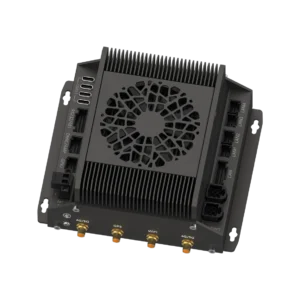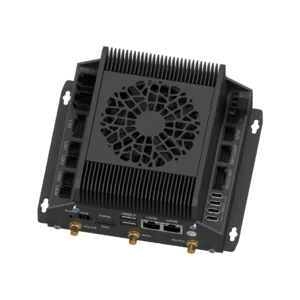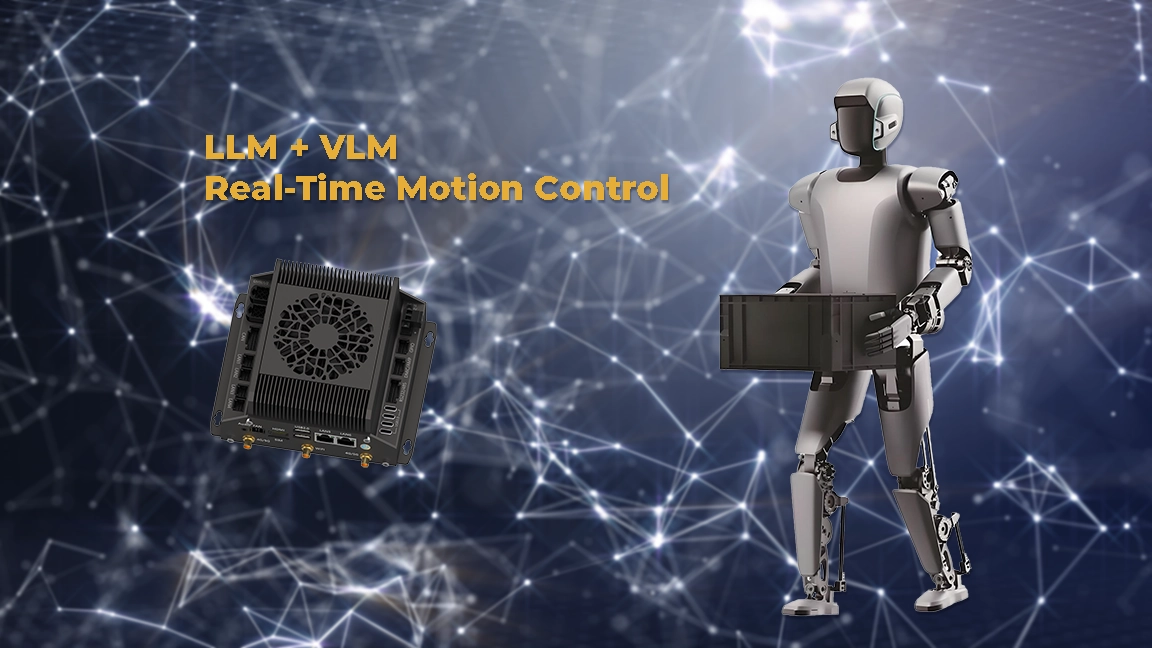Building the Industrial Brain: Hardware Architecture for Embodied AI
Artificial intelligence is entering the physical world.
This evolution defines the era of Embodied AI, where machines combine perception, reasoning, and motion to interact with their environment intelligently and in real time. Unlike traditional AI systems that process data remotely, embodied AI operates directly at the edge, enabling immediate responses in robotics, automation, and intelligent equipment.
At the center of this transformation is the industrial brain — a computing platform that integrates AI processing, sensor perception, and real-time control. This unified hardware and software architecture is what allows machines not only to think, but also to act.
From Intelligence to Action: The Concept of Embodied AI
Embodied AI refers to artificial intelligence embedded in a physical system that perceives and acts within the real world. Examples include autonomous driving systems, which perceive roads, make split-second decisions, and control vehicle motion, and humanoid robots, which sense their environment, balance dynamically, and perform complex movements.
However, embodied AI extends far beyond these examples. It includes collaborative robots, industrial inspection systems, and service automation, any intelligent device capable of sensing, interpreting, and acting.
An embodied AI system unites perception models such as computer vision and visual-language models (VLMs) to interpret surroundings, reasoning models such as large language models (LLMs) to plan and decide actions, and real-time motion control frameworks to execute precise movements. Together, they form a closed feedback loop of perception, reasoning, and execution, the core of intelligent physical behavior.
Software Foundations for Embodied AI
To connect high-level reasoning with deterministic control, embodied AI systems rely on modular software frameworks that handle AI inference, sensor fusion, and motion coordination.
The Intel Embodied Intelligence SDK is one example of such a platform. It provides an open foundation for developing embodied AI systems by integrating AI models, perception, and real-time motion control on Intel hardware.
- The LLM + VLM + Real-Time Motion Control sample pipeline demonstrates how language models interpret user instructions, vision models perceive the environment, and motion frameworks such as RTmotion and MoveIt2 execute tasks via real-time fieldbus interfaces like EtherCAT.
- The ORB Visual SLAM pipeline showcases camera-based localization and mapping for robotic navigation.
- Additional resources and documentation can be found in the Intel Embodied Intelligence SDK overview.
While Intel’s SDK provides a strong reference, other frameworks such as ROS 2, OpenVINO, and MoveIt are also widely adopted. Each contributes to the goal of integrating perception, AI reasoning, and motion control within a unified platform.
Hardware Requirements and Challenges
The hardware behind embodied AI must balance intelligence, precision, and reliability. Unlike cloud-based AI servers, edge systems must process high volumes of visual and sensory data while simultaneously performing deterministic real-time control.
To achieve this, the platform must provide:
- Heterogeneous computing resources combining CPU, GPU, and NPU for multimodal AI inference and decision-making
- Low-latency communication between the AI and control layers to ensure timely responses
- High-bandwidth camera interfaces such as GigE and GMSL for visual data acquisition
- Fieldbus and digital I/O for motor, actuator, and sensor control
- Efficient power management and thermal design for industrial or mobile operation
Building such a system requires hardware that merges AI acceleration with traditional motion control performance.
Nodka’s Embodied AI Industrial PC
Nodka’s Embodied AI Industrial PC (IPC) is designed to meet these challenges as a dedicated hardware reference platform for robotics and intelligent automation.
Powered by the Intel Core Ultra processor with integrated GPU and NPU, the system provides up to 99 TOPS of AI performance in a compact and power-efficient form factor.
The platform is optimized for real-time control and AI edge computing, ensuring low latency for motion, sensing, and communication tasks. It features two GMSL (Gigabit Multimedia Serial Link) ports for high-speed multi-camera input and a DMIC port for direct microphone integration, enabling synchronized audio and visual perception, essential for embodied AI and robotic


Other industrial interfaces include multiple Gigabit Ethernet and USB 3.0 ports for camera and sensor connectivity, EtherCAT, CAN, and RS485 communication for motor and actuator control, and isolated digital I/O for signal operations. Optional 5G, Wi-Fi, and GPS modules support mobile and distributed robotics applications. The system’s rugged fanless design and 12–24V DC input make it suitable for continuous operation in demanding environments.
Hardware Architecture and System Integration
Nodka’s embodied AI platform aligns with the modern architecture of intelligent robotics systems. The cognitive layer runs AI models for perception and reasoning, powered by OpenVINO and oneAPI for optimized performance. The control layer handles deterministic motion and sensor feedback through EtherCAT and GPIO interfaces. The hardware layer integrates compute, communication, and control within a compact, industrial-grade chassis.
By supporting both AI computing and real-time control within one system, Nodka’s embodied AI IPC acts as the operational backbone for next-generation intelligent machines, bridging software intelligence with physical execution.
Conclusion
Embodied AI represents the next evolution of automation, where intelligence and motion converge into one system. Software frameworks such as Intel’s Embodied Intelligence SDK provide the development blueprint, while Nodka delivers the hardware foundation that brings it to life.
With integrated AI acceleration, real-time control optimization, and support for advanced camera and sensor interfaces, Nodka’s Embodied AI Industrial PC serves as the industrial brain of intelligent machines. It empowers engineers, OEMs, and integrators to design systems that not only think, but act in the real world.
Discover how Nodka’s Embodied AI hardware can power your next robotics or intelligent automation project. Contact us to learn more about our industrial computing platforms.

